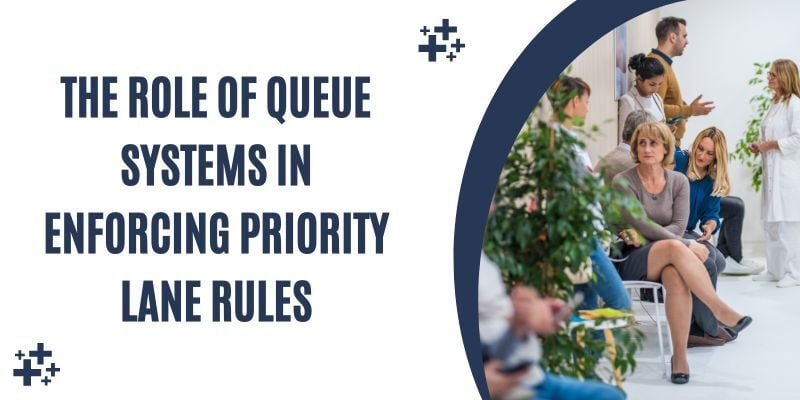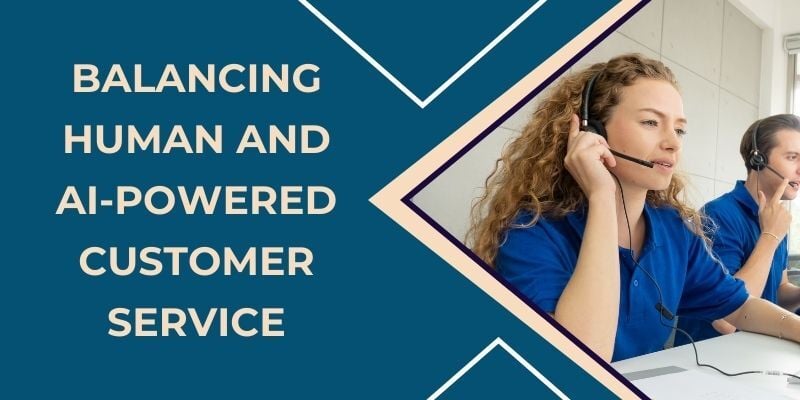Customer Satisfaction is a pivotal indicator of a customer’s contentment and gratification following an interaction with a product, service, or brand. Understanding how to measure customer satisfaction is pivotal in any business.
This knowledge provides critical insights into the customer experience, enabling the identification of areas for improvement and the overall enhancement of service quality.
This article will dive into strategies for effectively measuring customer satisfaction. We will also explore the central role that technology plays in this process.
Embracing these practices is integral to any business’s commitment to delivering exceptional customer experiences while leveraging technological advancements for a more comprehensive understanding of customer sentiment and preferences.
Methods of Customer Satisfaction Measurement
Customer Satisfaction measurement is a crucial aspect of any successful business. An excellent way to gauge customer satisfaction is through a systematic approach that employs various methods.
In the following sections, we will explore these methods in detail, shedding light on their effectiveness in providing valuable insights into customer sentiment and preferences.
1. Surveys
Surveys are indispensable tools in customer satisfaction measurement. They offer diverse channels to gather customer feedback and ascertain their level of contentment. Here, we will explore three prominent approaches.
Online Surveys
Online surveys are a cornerstone in customer satisfaction measurement, utilizing digital platforms for convenient feedback collection. They offer interactive elements and multimedia, enhancing engagement and providing comprehensive customer insights.
Phone Surveys
Phone surveys provide a personal touch, enabling real-time interaction for detailed feedback collection. This method is effective for addressing concerns promptly and gaining a deeper understanding of customer perspectives.
In-Person Surveys
Conducting surveys face-to-face allows for dynamic interaction and fosters trust. Valuable for industries reliant on personal relationships, in-person surveys capture nuanced feedback and non-verbal cues for a comprehensive evaluation.
2. Social Media Listening

In the age of digital connectivity, Social Media Listening has emerged as a critical component in understanding and enhancing customer satisfaction. It offers a real-time window into customers’ thoughts, opinions, and sentiments.
By actively monitoring social media platforms, businesses can proactively address concerns, celebrate positive experiences, and gain valuable insights for strategic improvements.
Monitoring Customer Feedback
Social media platforms serve as rich sources of customer feedback. By actively monitoring channels like Twitter, Facebook, and Instagram, businesses gain direct access to real-time sentiments and opinions.
This enables a proactive approach to addressing concerns and amplifying positive experiences.
Analyzing Sentiments
Analyzing sentiments expressed on social media provides a deeper understanding of customer perceptions. Companies can quantify these sentiments using advanced business analytics, turning qualitative data into actionable insights.
This process helps in identifying trends and areas for improvement.
Engaging with Customers
Engaging with customers on social media is a dynamic measure of customer satisfaction. Responding promptly to queries or comments demonstrates attentiveness and a commitment to customer welfare.
Moreover, actively participating in conversations surrounding the brand fosters community and trust.
Social media listening is a powerful tool for understanding how you measure customer satisfaction, offering a direct line to customer opinions and sentiments in the digital realm.
3. Customer Interviews and Focus Groups

Direct interactions through Customer Interviews and Focus Groups provide invaluable insights when understanding customer satisfaction. These methods delve deeper into the nuances of customer experiences, shedding light on what satisfies customers and why.
They offer a qualitative dimension to measuring customer satisfaction, capturing sentiments and preferences that quantitative measures may overlook.
Conducting Effective Interviews
Conducting customer interviews is a personalized approach to gauging satisfaction. This method allows businesses to pose specific questions, encouraging customers to articulate their thoughts and experiences.
The insights from interviews contribute to a more nuanced understanding of customer satisfaction.
Benefits of Focus Groups
Focus groups provide a collaborative environment where participants discuss their experiences openly.
This dynamic interaction yields insights into customer satisfaction and allows for exploring diverse perspectives. The collective discussion often unveils aspects that might go unnoticed through other methods.
Challenges and Considerations
While powerful, both interviews and focus groups come with challenges. Ensuring representative samples, addressing potential biases, and interpreting qualitative data require careful consideration.
Navigating these challenges is essential for extracting reliable insights and understanding how you measure customer satisfaction through qualitative means.
4. Queue Management System
When it comes to brick-and-mortar operations, a Queue Management System is pivotal for orchestrating a seamless customer journey. It goes beyond mere efficiency by directly impacting customer satisfaction.
We will now explore the roles of a Queue Management System in enhancing customer experience in physical locations, collecting feedback on waiting times, and improving operational efficiency.
We will also be shedding light on how to track customer satisfaction in real-world settings, introducing the concept of virtual queuing as well, and showcasing customer experience solutions that redefine service standards.
Enhancing Customer Experience in Physical Locations
A Queue Management System is crucial in arranging a seamless customer journey in physical spaces. Optimizing queues, streamlining processes, and minimizing wait times directly enhance customer satisfaction and loyalty.
Collecting Feedback on Waiting Times
Beyond operational efficiency, a Queue Management System allows businesses to collect valuable feedback on waiting times. This real-time data provides insights into customer experiences, enabling businesses to make informed decisions for continuous improvement.
Improving Operational Efficiency
Efficient queue management enhances the customer experience and improves overall operational efficiency. By leveraging virtual queuing and customer experience solutions, businesses can create a more streamlined and satisfying service environment.
Utilizing Technology in Customer Satisfaction Measurement
In the dynamic business landscape, technology is a catalyst for transformative change. Leveraging cutting-edge tools and solutions is principal in navigating the details of customer satisfaction.
Let’s explore how businesses harness technology to elevate customer satisfaction measurement strategies, fostering innovation and precision in understanding customer experiences.
1. Customer Feedback Software
Businesses turn to Customer Feedback Software as a pivotal tool in understanding customer sentiment. This technology redefines how to measure customer satisfaction and plays a central role in the broader landscape of customer satisfaction measurement.
Let’s dive into the essential aspects, exploring the features, capabilities, seamless integration with CRM systems, and the power of real-time reporting that characterizes this innovative approach.
Features And Capabilities
Customer Feedback Software goes beyond traditional methods, offering many features to effectively capture and analyze customer sentiment. From customizable surveys to sentiment analysis, these tools provide a comprehensive suite for businesses seeking actionable insights.
Integration With CRM Systems
Seamless integration with Customer Relationship Management (CRM) systems enhances the synergy between customer feedback and overall customer management. This integration ensures a holistic understanding of customer interactions and experiences.
Real-Time Reporting
The real-time reporting capabilities of Customer Feedback Software empower businesses to act swiftly on customer insights. This dynamic feature facilitates proactive responses to emerging trends, contributing to a continuous improvement cycle in customer satisfaction.
2. Artificial Intelligence (AI) in Customer Satisfaction
Artificial Intelligence (AI) is revolutionizing ways to measure customer satisfaction. In this exploration, we delve into the role of AI in reshaping how businesses understand and enhance customer experiences.
From Chatbots and Virtual Assistants to Predictive Analytics and Personalization, AI introduces unprecedented efficiency and innovation. Additionally, discover the intriguing area of WhatsApp queueing, redefining real-time customer engagement.
Chatbots And Virtual Assistants
AI-powered Chatbots and Virtual Assistants streamline customer interactions, providing instant support and information. They offer a dynamic and efficient way to address queries, contributing to improved customer satisfaction.
Predictive Analytics for Customer Behavior
By harnessing Predictive Analytics, businesses can anticipate customer behavior, allowing for proactive service improvements. This AI-driven approach enhances customer satisfaction by aligning services with evolving preferences.
Personalization And Customization
AI facilitates personalized experiences by analyzing customer data. Tailoring services to individual preferences fosters a sense of connection and contributes to overall customer satisfaction.
3. Self-Service Kiosk

Self-service kiosks redefine convenience, empowering customers with seamless transactions. Explore the transformative impact of these kiosks on customer satisfaction, from usability feedback to reducing wait times.
Empowering Customers with Self-Service Options
Self-service kiosks empower customers by providing control over their transactions. These user-friendly interfaces redefine service delivery, offering convenience and efficiency, directly contributing to heightened customer satisfaction.
Gathering Feedback on Kiosk Usability
Discover how to measure customer satisfaction through insights into Self-Service Kiosk usability. Collecting feedback on the user experience allows businesses to refine and optimize these systems, ensuring they align with customer preferences and needs.
Reducing Customer Wait Times and Improving Satisfaction
Self-service kiosks play a pivotal role in reducing customer wait times. By facilitating quicker transactions and minimizing queues, businesses enhance overall customer satisfaction.
This innovative approach combines efficiency with customer-centricity, creating a positive, streamlined experience.
Case Studies
Elevating Customer Satisfaction at Thrive Dispensaries
Thrive Dispensaries by MariMed partnered with Wavetec to revolutionize customer satisfaction. Wavetec’s Queue Management Solution seamlessly integrated with Thrive’s POS system, reducing wait times and enhancing staff productivity.
LCDs, Donatello Digital Signage, and API integration transformed the customer journey, providing real-time insights. This case study illustrates a practical model for measuring customer satisfaction through innovative queue management solutions.
Transforming Customer Satisfaction at Union Station, Toronto
Wavetec’s SIM Dispensing Kiosks at Union Station is aimed at enhancing telecom services and elevating Chatr Mobile’s brand awareness. Deployed in collaboration with EZ Sim, these kiosks provide convenience and are a strategic tool for measuring customer satisfaction.
The interactive displays and instant SIM card issuance provide a seamless customer experience, showcasing Wavetec’s impact in delivering customer-centric solutions beyond traditional measures.
Recap of Key Points
To conclude, understanding customer satisfaction is central for businesses seeking sustained success. Through diverse strategies, from traditional surveys to cutting-edge technologies like AI and self-service kiosks, organizations can glean valuable insights into customer experiences.
The key lies in the thoughtful integration of these methods, ensuring a holistic approach considering quantitative and qualitative feedback.
By embracing customer feedback software, social media listening, and incorporating AI-driven solutions, businesses can navigate the dynamic landscape of customer satisfaction measurement.
The common thread in these approaches is a commitment to continuously enhancing services, reducing wait times, and fostering personalized interactions.
Ultimately, an unwavering dedication to customer satisfaction strengthens brand loyalty and propels businesses toward enduring success in an ever-evolving market.
BOOK A FREE DEMO





